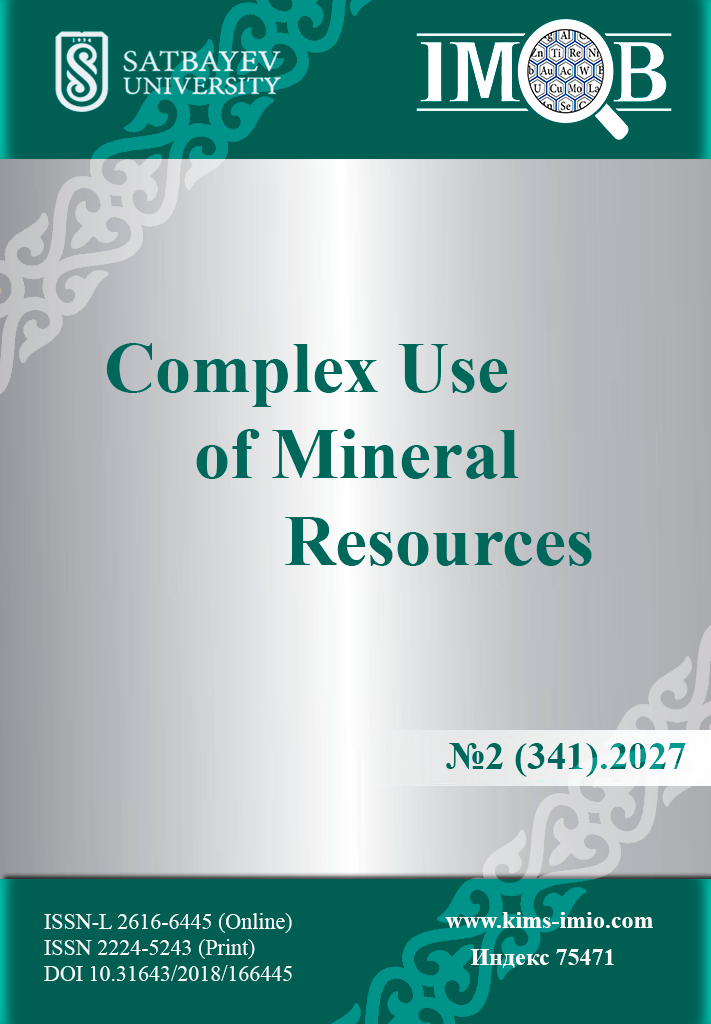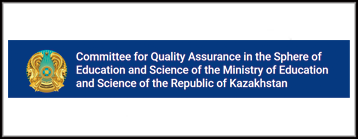Innovative technologies for paraffin deposit removal in oil tubing to enhance oil recovery: a mechanical approach
DOI:
https://doi.org/10.31643/2027/6445.17Keywords:
paraffin deposits, tubing cleaning, mechanical scraper, enhanced oil recovery, sucker rod motion, mature oil fields.Abstract
Asphaltene - resin - paraffin deposits (ARPD) on the inner wall of production tubing shorten service intervals, elevate operating expenditures, and frequently induce downtime at mature fields. This paper presents the design and field performance of a rod-driven in-well scraper that provides continuous tubing cleaning during routine sucker-rod operation without chemical dosing or surface interventions. The scraper sub is inserted into the rod string and is compatible with Ø73 - 89 mm tubing and Ø19 - 22 mm rods. Performance was evaluated on a before/after basis using the inter-cleaning period (ICP), downtime, and annual cleaning costs, with extrapolation to multi-well programs. Field deployments of model CP TP ST 01KZ achieved an ICP of 144 - 280 days with zero cleaning-induced downtime (0 days yr⁻¹). Annual cleaning costs were ~0.265 million KZT per well (scheduled service only), which is ≈31× lower than hot-wash budgets on the same asset. The implied per-well saving is ≈7.94 million KZT yr⁻¹; for a 50-well program, this corresponds to ≥397 million KZT yr⁻¹ in avoided expenditure. Continuous in-well action of the reciprocating toothed head on each rod stroke disrupts the boundary wax layer and limits deposit regrowth between services, eliminating periodic thermal/chemical treatments and their logistics. The subassembly mass (≈30 kg) permits installation with standard handling; the pump string configuration is unchanged apart from the insertion of the scraper section. Compared with thermal, chemical, and batch mechanical methods, the technology extends service intervals, removes cleaning-related shut-ins, and compresses the cleaning budget to a predictable, low annual service cost. The results support routine use of rod-driven scraping for ARPD control in wax-prone wells and provide quantitative guidance for field-scale rollout and further optimization (wear resistance, centralization tolerances, and application in deviated completions).
Downloads
References
Pat. 7700 KZ. Method for cleaning oil pumping wells from paraffin and other deposits. Sarsenbaev AA, Zhan YM, Karibai E, Altybai KA, Sarsenbaev MA, Sarsenbaev ZA. Appl. 30.12.2022, publ. 30.12.2022. https://qazpatent.kz/en/content/poleznaya-model-30122022
Metaksa GP, Alisheva ZN, Metaksa AS, Fedotenko NA. Scientific and technical fundamentals of changing the properties of hydrocarbons in conditions of optimal subsoil use. Eurasian Mining. 2023; 2:75-79. https://doi.org/10.17580/em.2023.02.16
Wang X, Gurbanov H, Adygezalova M, Alizade E. Investigation of Removing Asphaltene-Resin-Paraffin Deposits by Chemical Method for Azerbaijan High-Paraffin Oil Production Process. Energies. 2024; 17(15):3622. https://doi.org/10.3390/en17153622
Nuruallaev V, Usubaliev B. New methods for combating asphalt-resin-paraffin deposits in oil transportation processes. Proceedings on Engineering Sciences. 2021; 3(2):193-200. https://doi.org/10.24874/PES03.02.007
Korobov GYu, Parfenov DV, Nguyen VT. Mekhanizmy obrazovaniya asfal'tosmoloparafinovykh otlozheniy i faktory intensivnosti ikh formirovaniya [Mechanisms of formation of asphalt-resin-paraffin deposits and factors of the intensity of their formation]. Izvestiya Tomsk Polytechnic University. Engineering of Georesources. 2023; 334(4):103–116. https://doi.org/10.18799/24131830/2023/4/3940
Tanirbergenova S, Ongarbayev Y, Tileuberdi Y, Zhambolova A, Kanzharkan E, Mansurov Z. Selection of solvents for the removal of asphaltene-resin-paraffin deposits. Processes. 2022; 10(7):1262. https://doi.org/10.3390/pr10071262.
Alisheva Z, Nadirov K, Al-Dujaili AN, Bimbetova G, Nadirova Z, Zhantasov M, Tileuberdi N, Dauletuly A. Integrated strategies for controlling water cut in mature oil fields in Kazakhstan. Polymers. 2025; 17(7):829. https://doi.org/10.3390/polym17070829.
Wang X, Gurbanov H, Adygezalova M, Alizade E. Investigation of removing asphaltene-resin-paraffin deposits by chemical method for Azerbaijan high-paraffin oil production process. Energies. 2024; 17(15):3622. https://doi.org/10.3390/en17153622.
Khuramshina RA, Muratova VI. Studies of the use of ultrasonic equipment for the removal of asphalt-resin-paraffin deposits at oil and gas transport and storage facilities. Materials Science Forum. 2024; 1080:157-162. https://doi.org/10.4028/p-2p7s8j.
Akbari A, Kazemzadeh Y, Martyushev D, Cortes F, et al. Using ultrasonic and microwave to prevent and reduce wax deposition in oil production. Petroleum, 2024; 10(4):584-593. https://doi.org/10.1016/j.petlm.2024.09.002
Garcia MC. Mechanical cleaning devices for wax deposition in pipelines. Journal of Natural Gas Science and Engineering. 2020; 77:103248. https://doi.org/10.1016/j.jngse.2020.103248
Ahmed S. Integrated approaches to mitigate paraffin deposition in oil production. Journal of Petroleum Exploration and Production Technology. 2021;11(2):581-593. https://doi.org/10.1007/s13202-020-01100-3
Gurbanov GR, Adigozalova MB, Akhmedov SF. Research into the influence of the depressant additive Difron-4201 on the formation of paraffin deposits in laboratory conditions. Azerbaijan Oil Economy. 2020; 12:30-36. https://doi.org/10.20944/preprints202407.1242.v1
Aum YK, Aum PT, da Silva DN, et al. Effective removal of paraffin deposits using oil-in-water microemulsion systems. Fuel. 2024; 358:130112. https://doi.org/10.1016/j.fuel.2023.130112
Gao X, Huang Q, Yun Q, Li Q, Li W, Liang Y, Wang K, Chen C, Liu H, Paso KG. Modeling wax deposit removal during pigging with foam pigs. Geoenergy Science and Engineering. 2024. https://doi.org/10.1016/j.geoen.2024.212713
Panahov EM, Abbasov SZ, Ismayilov AS, Gurbanov GR. Development of a new composition for the prevention of asphaltene-paraffin-resin deposits. Azerbaijan Oil Economy. 2023; 14:65-70. https://doi.org/10.20944/preprints202407.1242.v1
Johnson M. Advances in paraffin deposition prevention in oil pipelines. Journal of Petroleum Science and Engineering. 2015; 126:208-215. https://doi.org/10.1016/j.petrol.2014.12.024
Smith JA. Chemical methods for paraffin control in crude oil production. Energy & Fuels. 2017; 31(5):5056-5062. https://doi.org/10.1021/acs.energyfuels.7b00123
Bell E, Santos G, Daraboina N, Sarica C. Visualization of thermal removal mechanism of paraffin deposits: Providing guidelines for minimum temperature requirements. Fuel. 2024; 356:129577. https://doi.org/10.1016/j.fuel.2023.129577
Wang Y. Thermal techniques in paraffin removal from oil pipelines. Petroleum Science. 2019; 16(3):693-702. https://doi.org/10.1007/s12182-019-0323-3
Wang Z, Zhang K, Sun H. Melting and removing wax deposition by thermal washing in oil well. Geoenergy Science and Engineering. 2024; 237:212808. https://doi.org/10.1016/j.geoen.2024.212808
Downloads
Published
How to Cite
Issue
Section
License
Copyright (c) 2025 Zh.N. Alisheva, M.A. Sarsenbayev, Zh.A. Sarsenbaev, S.E. Baibotaeva

This work is licensed under a Creative Commons Attribution 4.0 International License.


























